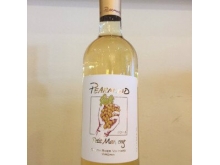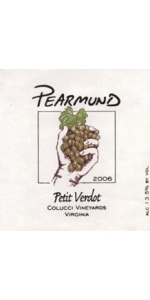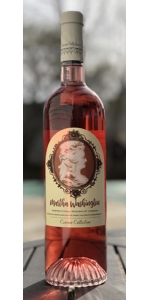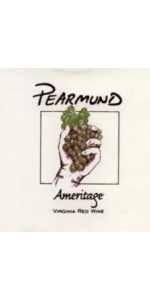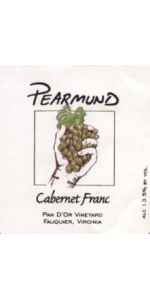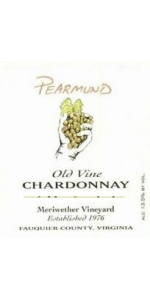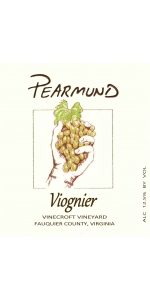Pearmund Cellars Petit Manseng 2023
6 bottles with free shipping for: $204.00
12 bottles with free shipping for: $360.00
| BUY MORE! SAVE MORE! | ||||||||||||||||||||
|
| Country: | United States |
| Region: | Virginia |
| Winery: | Pearmund Cellars |
| Grape Type: | Petit Manseng |
| Vintage: | 2023 |
| Bottle Size: | 750 ml |
A refreshing and crisp, dry white with notes of grapefruit and hints of candied pineapple on the nose. Pearmund Cellars is the largest producer of this standout varietal in the Americas.
Wine Information
Alcohol Content: 12.5%
Residual Sugar: 0%
The Pearmund Cellars Estate
Pearmund Cellars was founded in 1976 and purchased by Chris in 1993 (with his first vintage in 2002), the estate has had active agriculture since the mid-1700s.. It is located in the foothills of eastern Fauquier County, VA. The winery spreads over 7500-square-foot and they farm 25 acres of vines: Chardonnay, Viognier, Riesling, Late Harvest Vidal, Merlot, Cabernet Franc, Cabernet Sauvignon, Petit Verdot, Ameritage.
At the estate the oldest Chardonnay vines in Virginia are planted, while the rest of the grapes are sourced from various parts of the Commonwealth. The vineyard is managed with as little intrusion as possible, and the estate operates in a largely holistic, earth-conscious manner. They produce about 7,000 cases annually with an almost equal split between red and white.
They produce 7,000 cases
Pearmund Cellars was voted Virginia's Favorite Winery in 2007.
Pearmund Cellars Petit Verdot is made from 100 percent Petit Verdot.
Blackberry aromas with rich plum flavors. Well-rounded tannins and a smooth finish. Earthy, rustic, and warm. Limited production.
In 2019, Chris Pearmund worked with sixteen Virginia wineries to create a blended wine with grapes from each participating vineyard to commemorate the 400th Anniversary of Winemaking in Virginia. A portion of the wine’s proceeds were donated to museums and events that would contribute to tourism in the Commonwealth and foster a broader understanding of Virginia’s cultures and cuisines. This idea sparked another movement to celebrate through wine, and Cameo seemed a perfect way to commemorate the milestone moment in history.
Cameo Wine Collection was created to highlight women in Virginia, and the memorable events that have unfolded in the Commonwealth that lead to the movement to secure women’s right to vote. Raise a glass and toast the 100th Anniversary of the 19th Amendment. Cameo Rosé honors 12 of Virginia’s most influential women. Each bottle has a label depicting one of the chosen women, who’s contributions range from historic, business, entertainment, politics, and wine. The story of the suffrage movement in Virginia is an important part of the collective history. A variety of cultures and eras have been curated to share recollections of the fearless, passionate ways each woman lived so that a case of wine will contain twelve different individuals to celebrate. Women like Martha Washington, Pearl Bailey, and Ella Fitzgerald.
Cameo Rosé offers aromas of raspberry, strawberry, and peach. Dry on the palate, silky tannins and minerality are balanced by strawberry and orange zest flavors.
Pearmund Cellars Ameritage Red is made from 33% Cabernet Sauvignon, 30% Merlot, 17% Malbec, 10% Cabernet Franc, 10% Petit Verdot.
Cherry, currant, and herbaceous flavors. Balanced tannins with a lingering finish. Full-bodied and complex. Limited production.
Vintage Notes: A cool summer and early fall allowed a longer ripening season, helping benefit this years Cabernet Franc, as its natural spice was allowed to mature and become better defined.
Pearmund Cellars Cabernet Franc is made from100% Cabernet Franc. Known primarily as a blending grape in Bordeaux’s left bank. Its ability to grow and mature in Virginia makes it one of the States finest varietals.
Tasting Notes: A nose of cherries, raspberries and fennel. Peppery spice continues on the palate with notes of cocoa and sweet cedar wood, allowing for easy drinking. A hint of pepper will linger on the finish.
Pearmund Cellars Old Vine Chardonnay is made from 100 percent Chardonnay.
Warm buttery flavor, hint of pear and apple. Full-bodied and lush to the palate. Aged nine months in French oak
Pearmund Cellars Viognier Vinecroft Vineyard is made from 100 percent Viognier.
Explosive tropical fruit flavors: Pineapple and peach with hints of grapefruit. Powerful, yet feminine.
Sweet and ripe on the palate with peach, apricot, pineapple, and mango notes. Long and flavorful finish.
- back
Buccella Cuvee Katrina Eileen Napa Valley is made from 100% Cabernet Sauvignon.
Named after our first-born daughter, Cuvée Katrina Eileen is primarily composed of fruit from a vineyard in the Western Hills of Yountville, where yields are miniscule. The extremely rocky soil of the vineyard produces concentrated clusters of perfectly ripened Cabernet Sauvignon. In German, the name “Katrina” represents purity and fittingly, this wine is made entirely from the Cabernet Sauvignon grape, providing a pure expression of this decadent varietal. It also reflects our daughter’s personality with flavors that are complex, unreserved and expressive.
Always a 100% Cabernet blend, our 2017 Cuvée Katrina Eileen is an opulent and mouth-enriching wine. Captivated by the inky-black color, luscious scents of dark espresso and cinnamon stick leap out, along with powerful elements of graphite and cassis. Remarkably rich and seamless, while boasting flavors of blueberry compote, dark chocolate and black raspberries, this is a compelling and luxurious wine focused upon velvety texture, silky tannins and incredible length. An intentional breadth on the palate and length in the finish are hallmarks of this wine.
Manoir du Carra Bistrot Beaujolais-Villages is made from 100 percent Gamay.
From Granitic and sandy soils, the Beaujolais-Villages Carra Bistrot exhibits intense color, with hints of cherry and garnet, and to reveal aromas of red fruit dominated by cassis and strawberry. This Cuvée was specially made for the Parisian Bistrots willing to offer easy drinking wines, with enough body to withstand local Cuisine from the Beaujolais region.
Produced from a selection of old vines (50-70 years old). Manual harvest; selection of the best grapes using a sorting table; semi-carbonic maceration for 10-12 days. No filtration. Egg white fining.
Great with coq au vin (Chicken cooked in a red wine sauce) or charcuterie (garlic sausage, dry sausage).

